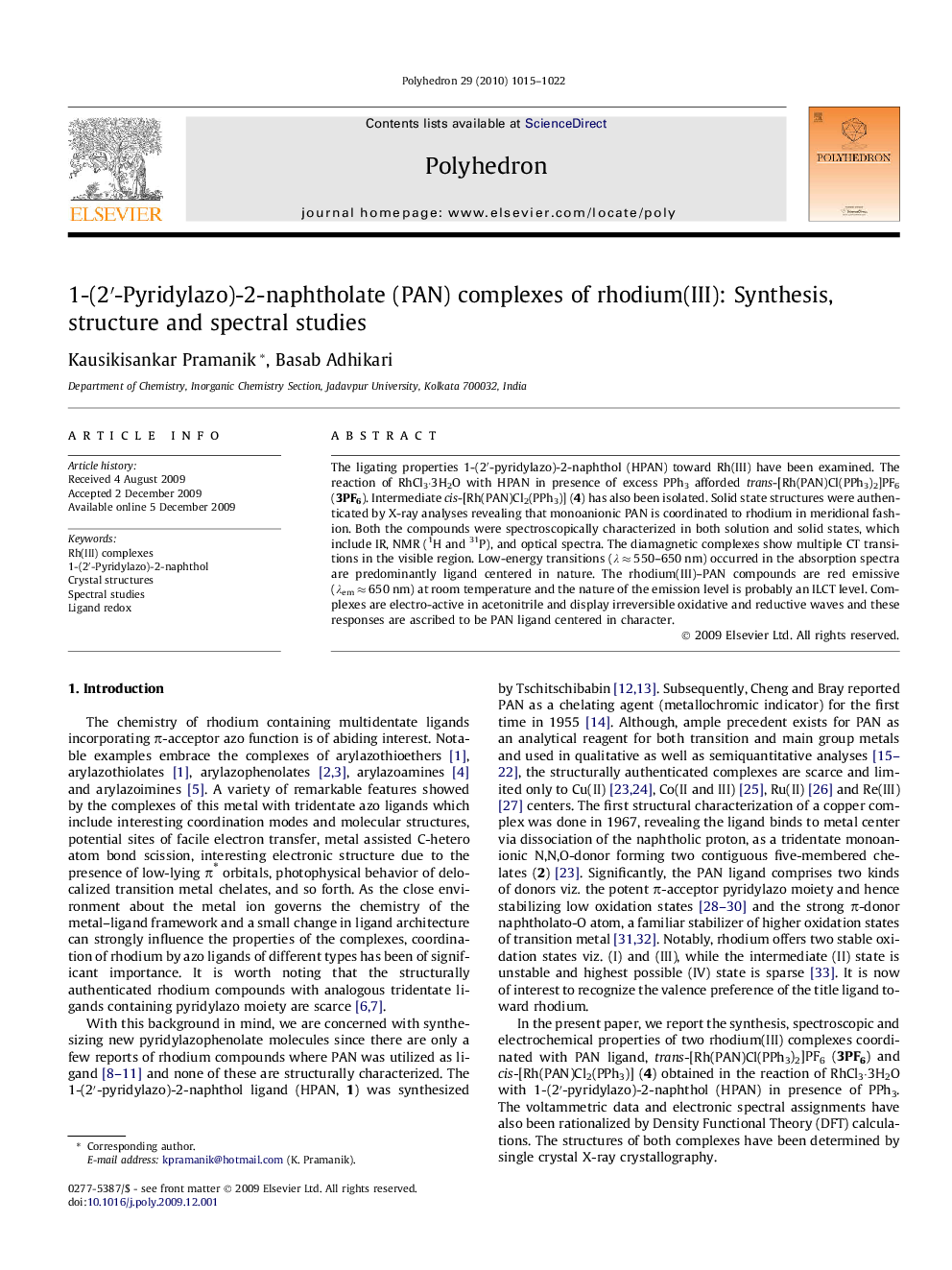| کد مقاله | کد نشریه | سال انتشار | مقاله انگلیسی | نسخه تمام متن |
|---|---|---|---|---|
| 1339314 | 979702 | 2010 | 8 صفحه PDF | دانلود رایگان |

The ligating properties 1-(2′-pyridylazo)-2-naphthol (HPAN) toward Rh(III) have been examined. The reaction of RhCl3·3H2O with HPAN in presence of excess PPh3 afforded trans-[Rh(PAN)Cl(PPh3)2]PF6 (3PF6). Intermediate cis-[Rh(PAN)Cl2(PPh3)] (4) has also been isolated. Solid state structures were authenticated by X-ray analyses revealing that monoanionic PAN is coordinated to rhodium in meridional fashion. Both the compounds were spectroscopically characterized in both solution and solid states, which include IR, NMR (1H and 31P), and optical spectra. The diamagnetic complexes show multiple CT transitions in the visible region. Low-energy transitions (λ ≈ 550–650 nm) occurred in the absorption spectra are predominantly ligand centered in nature. The rhodium(III)–PAN compounds are red emissive (λem ≈ 650 nm) at room temperature and the nature of the emission level is probably an ILCT level. Complexes are electro-active in acetonitrile and display irreversible oxidative and reductive waves and these responses are ascribed to be PAN ligand centered in character.
The ligating properties 1-(2′-pyridylazo)-2-naphthol (HPAN) toward Rh(III) have been examined. The reaction of RhCl3·3H2O with HPAN in presence of excess PPh3 afforded trans-[Rh(PAN)Cl(PPh3)2]PF6 (3PF6) complex. Intermediate cis-[Rh(PAN)Cl2(PPh3)] (4) has also been isolated. Both complexes were characterized by various spectral techniques and their structures were authenticated by X-ray crystallography. The title ligand behaves as a tridentate monoanionic N,N,O-donor and shows strong affinity toward Rh(III), indicating its borderline nature. These compounds exhibit absorption and luminescence in the low-energy part of the visible region. Both are electro-active and display irreversible oxidative and reductive waves.Figure optionsDownload as PowerPoint slide
Journal: Polyhedron - Volume 29, Issue 3, 19 February 2010, Pages 1015–1022